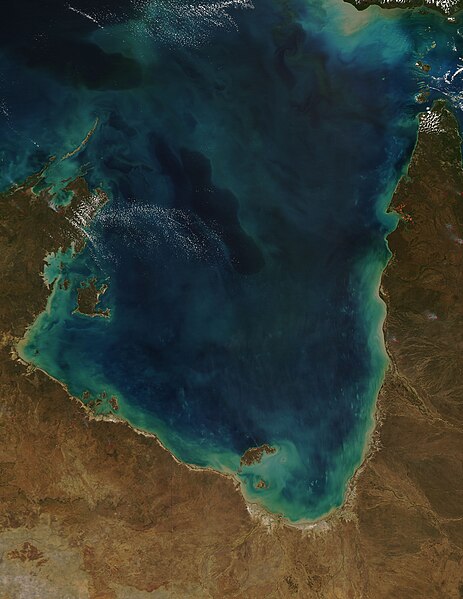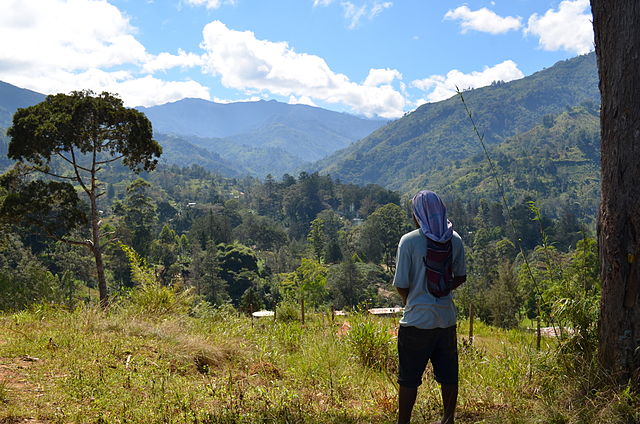The Gulf of Carpentaria is a sea off the northern coast of Australia. It is enclosed on three sides by northern Australia and bounded on the north by the eastern Arafura Sea, which separates Australia and New Guinea. The northern boundary is generally defined as a line from Slade Point, Queensland in the northeast, to Cape Arnhem on the Gove Peninsula, Northern Territory in the west.
The Gulf of Carpentaria between Bentinck Island and the Australian continent
Loading ore from McArthur River zinc mine at Bing Bong Loading Facility, 2011
Gulf of Carpentaria from MODIS
Karumba Beach, Karumba, Queensland
New Guinea is the world's second-largest island, with an area of 785,753 km2 (303,381 sq mi). Located in Melanesia in the southwestern Pacific Ocean, the island is separated from Australia by the 150-kilometre wide Torres Strait, though both landmasses lie on the same continental shelf, and were united during episodes of low sea level in the Pleistocene glaciations as the combined landmass of Sahul. Numerous smaller islands are located to the west and east. The island's name was given by Spanish explorer Yñigo Ortiz de Retez during his maritime expedition of 1545 due to the resemblance of the indigenous peoples of the island to those in the African region of Guinea.
Mount Bosavi
Highlands of Papua New Guinea
Yali tribesman in the Baliem Valley
Yali Mabel, Kurulu Village War Chief at Baliem Valley








